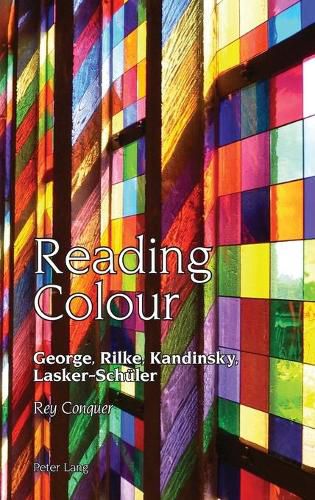Readings Newsletter
Become a Readings Member to make your shopping experience even easier.
Sign in or sign up for free!
You’re not far away from qualifying for FREE standard shipping within Australia
You’ve qualified for FREE standard shipping within Australia
The cart is loading…






This title is printed to order. This book may have been self-published. If so, we cannot guarantee the quality of the content. In the main most books will have gone through the editing process however some may not. We therefore suggest that you be aware of this before ordering this book. If in doubt check either the author or publisher’s details as we are unable to accept any returns unless they are faulty. Please contact us if you have any questions.
Colour is a problem for poetry, where - unlike in painting, sculpture or film - it is marked by its absence. This absence raises questions that have often been overlooked in the study of colour: how do writers navigate the invisibility of colour in text? What aesthetic commitments do certain attitudes to colour expose? And how, in the face of its absence, do we read colour?
This ambitious and exciting study addresses these questions, analysing the use of colour language in the work of Stefan George, Rainer Maria Rilke, Wassily Kandinsky and Else Lasker-Schuler to tease out how these poets understood poetic production, and how they negotiated the relations between poem, reader and world. Covering the poetry, prose, translation, literary and art criticism and theory of these and other writers central to European literature at the turn of the twentieth century, Reading Colour sheds new light on poetic practice of the period, but also uses colour to open up an understanding of how poetic language works, and to ask how we read poetry.
This book was the winner of the 2018 Early Career Researcher Prize in German Studies, a collaboration between the Institute for German Studies at the University of Birmingham and Peter Lang.
$9.00 standard shipping within Australia
FREE standard shipping within Australia for orders over $100.00
Express & International shipping calculated at checkout
This title is printed to order. This book may have been self-published. If so, we cannot guarantee the quality of the content. In the main most books will have gone through the editing process however some may not. We therefore suggest that you be aware of this before ordering this book. If in doubt check either the author or publisher’s details as we are unable to accept any returns unless they are faulty. Please contact us if you have any questions.
Colour is a problem for poetry, where - unlike in painting, sculpture or film - it is marked by its absence. This absence raises questions that have often been overlooked in the study of colour: how do writers navigate the invisibility of colour in text? What aesthetic commitments do certain attitudes to colour expose? And how, in the face of its absence, do we read colour?
This ambitious and exciting study addresses these questions, analysing the use of colour language in the work of Stefan George, Rainer Maria Rilke, Wassily Kandinsky and Else Lasker-Schuler to tease out how these poets understood poetic production, and how they negotiated the relations between poem, reader and world. Covering the poetry, prose, translation, literary and art criticism and theory of these and other writers central to European literature at the turn of the twentieth century, Reading Colour sheds new light on poetic practice of the period, but also uses colour to open up an understanding of how poetic language works, and to ask how we read poetry.
This book was the winner of the 2018 Early Career Researcher Prize in German Studies, a collaboration between the Institute for German Studies at the University of Birmingham and Peter Lang.